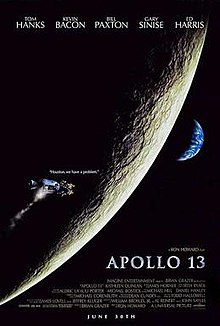 |
| (Theatrical movie poster. Source: Imagine Entertainment and Universal Pictures via Wikipedia) |
Audience:
FFT2 to ICT2
Timeframe:
40 - 50 minutes
Facilitator Action:
Show students David Marquet's "Greatness" speech (about 10 minutes) as a primer on intent and means of getting students into the leadership mindset.
Facilitator Statement:
We're good at telling people what they can and can't do on and off the fireline. We do this in spite of the fact that each of our actions on a fire happen in a very dynamic environment and the plan doesn't always fit nicely into what we "can" do. That's the reason we have this concept of leader's intent.
Student Practice:
The reason we have leader's intent is so our subordinates are able and willing to make decisions on their own while understanding and contributing to the overall objective. If they have the understanding of what needs to be accomplished and they have the technical ability to complete the task, then they should be empowered to make decisions that produce the desired outcome.
Thanks to Brian Looper (WA State DNR) for this contribution.
FFT2 to ICT2
Timeframe:
40 - 50 minutes
Facilitator Action:
Show students David Marquet's "Greatness" speech (about 10 minutes) as a primer on intent and means of getting students into the leadership mindset.
Facilitator Statement:
We're good at telling people what they can and can't do on and off the fireline. We do this in spite of the fact that each of our actions on a fire happen in a very dynamic environment and the plan doesn't always fit nicely into what we "can" do. That's the reason we have this concept of leader's intent.
Student Practice:
- Discuss the three parts of leader's intent:
- Task
- Purpose
- End state
The reason we have leader's intent is so our subordinates are able and willing to make decisions on their own while understanding and contributing to the overall objective. If they have the understanding of what needs to be accomplished and they have the technical ability to complete the task, then they should be empowered to make decisions that produce the desired outcome.
Unfortunately, we often spend too much time telling people HOW to do things instead. When the situations start changing, they become afraid to make decisions because the change is not something they have been told how to deal with.
Leadership Challenge:
Challenge students to think about leader's intent when they give out assignments on an incident.
Facilitator Action:
- Show students the following Apollo 13 clip (about 10 minutes):
- Start: "Houston, we have a problem."
- End: After they move to the LEM and the scene switches to Johnny Carson on TV.
Student Practice:
- While watching the Apollo 13 movie clip, use your IRPG to consider how leader's intent is used in the movie clip as well as how the leadership values (duty, respect, integrity) and their underlying principles are applied.
- After viewing the clip, discuss with other students what the students observed.
Facilitator Action:
Group discussions will vary. Consider asking conceptual questions to complement group discussion (about 20-30 minutes). Questions may include:
- Who is in charge? Does that change? (Discussed if it's Lovell or Kranz before the incident, and how Kranz takes charge once the incident occurs.)
- Who was empowered to make decisions? What happened when they did? (The decision by ECON to shut down the reactant valves and abort the moon landing generated the most discussion on this topic.)
- When was trust and cohesion apparent? When was it not? What influences trust and cohesion and how do you change that? (Our emphasis here was about Swigert not being completely trusted yet despite being technically competent--a common challenge in our world when working with someone new on an incident.)
- What values and principles did you observe and how were they applied?
Thanks to Brian Looper (WA State DNR) for this contribution.
Originally posted May 12, 2015.
No comments:
Post a Comment